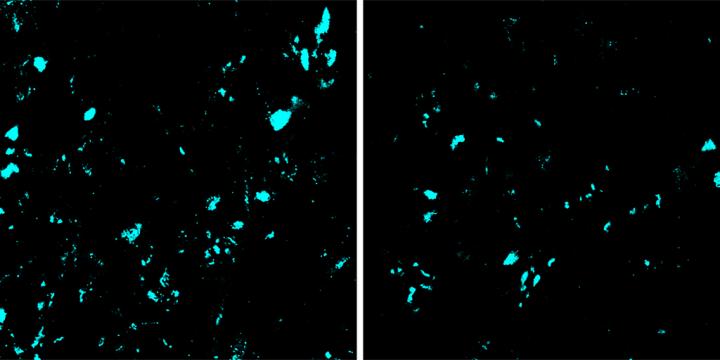
Credit: Image courtesy of Thomas Gaj, University of Illinois
CHAMPAIGN, Ill. — With a new CRISPR gene-editing methodology, scientists from the University of Illinois at Urbana-Champaign inactivated one of the genes responsible for an inherited form of amyotrophic lateral sclerosis – a debilitating and fatal neurological disease for which there is no cure. The novel treatment slowed disease progression, improved muscle function and extended lifespan in mice with an aggressive form of ALS.
“ALS unfortunately has few treatment options. This is an important first step in showing that this new form of gene editing could be used to potentially treat the disease,” said bioengineering professor Thomas Gaj, who co-led the study with bioengineering professor Pablo Perez-Pinera.
The method relied on an emerging gene-editing technology known as CRISPR base editors.
Traditional CRISPR gene-editing technologies cut both strands of a DNA molecule, which can introduce a variety of errors in the DNA sequence, limiting its efficiency and potentially leading to a number of unintended mutations in the genome. The Illinois group instead used base editing “to change one letter of the DNA sequence to another without cutting through both DNA strands,” Perez-Pinera said.
“Base editors are too large to be delivered into cells with one of the most promising and successful gene therapy vectors, known as adeno-associated virus,” Gaj said. However, in 2019, Perez-Pinera’s group developed a method of splitting the base editor proteins into halves that can be delivered by two separate AAV particles. Once inside the cell, the halves reassemble into the full-length base editor protein.
By combining the power of AAV gene delivery and split-base editors, Gaj and Perez-Pinera targeted and permanently disabled a mutant SOD1 gene, which is responsible for roughly 20% of inherited forms of ALS. They published their results in the journal Molecular Therapy.
“Many ALS studies are focused on preventing or delaying the onset of the disease. However, in the real world, most patients are not diagnosed until symptoms are advanced,” said graduate student Colin Lim. “Slowing progression, rather than preventing it, may have a greater impact on patients.” Lim is the co-first author of the study along with graduate students Michael Gapinske and Alexandra Brooks.
The researchers first tested the SOD1 base editor in human cells to verify reassembly of the split CRISPR base editor and inactivation of the SOD1 gene. Then they injected AAV particles encoding the base editors into the spinal columns of mice carrying a mutant SOD1 gene that causes a particularly severe form of ALS that paralyzes the mice within a few months after birth.
The disease progressed more slowly in treated mice, which had improved motor function, greater muscle strength and less weight loss. The researchers observed an 85% increase in time between the onset of the late stage of the disease and the end stage, as well as increased overall survival.
“We were excited to find that many of the improvements happened well after the onset of the disease. This told us that we were slowing the progression of the disorder,” Gapinske said.
The base editor introduces a stop signal near the start of the SOD1 gene, so it has the advantage of stopping the cell from making the malfunctioning protein no matter which genetic mutation a patient has. However, it potentially disrupts the healthy version of the gene, so the researchers are exploring ways to target the gene’s mutant copy.
“Moving forward, we are thinking about how we can bring this and other gene-editing technologies to the clinic so that we can someday treat ALS in patients,” Gaj said. “For that, we have to develop new strategies capable of targeting all of the cells involved in the disease. We also have to further evaluate the efficiency and safety of this approach in other clinically relevant models.”
The split base editor approach has potential for treating other diseases with a genetic basis as well, Perez-Pinera said. Though ALS was the first demonstration of the tool, his group has studies underway applying it to Duchenne muscular dystrophy and spinal muscular atrophy.
###
The Muscular Dystrophy Association, the Judith and Jean Pape Adams Foundation, the American Heart Association and the National Institutes of Health supported this work.
Editor’s note: To contact Thomas Gaj, call 217-300-7334; email [email protected]. To contact Pablo Perez-Pinera, email: [email protected].
The paper “Treatment of a mouse model of ALS by in vivo base editing” is available online. DOI: 10.1016/j.ymthe.2020.01.005
Media Contact
Liz Ahlberg Touchstone
[email protected]
217-244-1073
Original Source
https:/
Related Journal Article
http://dx.




